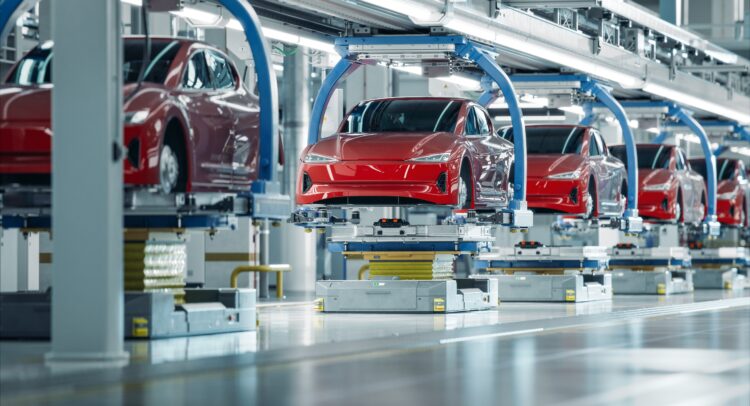Electric vehicle (EV) sales experienced a slowdown in the first few months of 2024, catching most manufacturers off guard as sales decelerated compared to the preceding 12 years. Despite this setback, with gas prices expected to continue to soar, more drivers may opt to realize the dream of driving past the pump always, leading to a potential surge in new EV drivers.
Stay Ahead of the Market:
- Discover outperforming stocks and invest smarter with Top Smart Score Stocks
- Filter, analyze, and streamline your search for investment opportunities using Tipranks' Stock Screener
Why Did EV Sales Slow?
A major reason EV sales began to slow in the first quarter of 2024 is sticker shock. The average price of an EV is now around $50,000. This relatively high price tag has been a roadblock for consumers who prefer to keep driving costs down.
Moreover, sales may have stalled further because of fewer available EVs that would still qualify for federal tax credits or other incentives. When some of the tax incentives expired for popular vehicles, so did part of the interest in owning an EV. Additionally, charging infrastructure began to lag behind the number of electric vehicles added to the road.
Lastly, a significant contributor to slower EV sales is that the price of gasoline began 2024 at its lowest level since the pandemic. This low fuel cost made traditional cars appear more attractive. However, this appeal may reverse as refueling becomes an unpleasant experience.
Why Are Gas Prices Rising?
Gas prices have been on the rise in recent weeks, with expectations for this trend to persist. Several factors have played a role in driving up pump prices. Firstly, there is a seasonal shift as U.S. refiners transition to summer-grade gasoline and deplete winter inventories. Additionally, the recent attacks on Russian refineries have had a lasting effect. It is estimated that these attacks have decreased global output by 600,000 barrels per day of petroleum utilized in gasoline production.
Another driver of higher gasoline prices is the military conflicts in the Middle East. This has led to supply disruptions of petroleum. Moreover, an extended commitment by the Oil and Petroleum Exporting Countries (OPEC) and its allies to cut oil production has added to the climb in gas prices by decreasing the supply.
The combination of these factors, along with some aging U.S. refineries that have recently been taken offline, has caused the Automobile Association of America (AAA) to warn that pump prices are likely to soon reach $4 per gallon.
Rising Gas Prices Could Increase EV Sales
With gas prices on the rise, it’s expected to breathe new life into the electric vehicle (EV) market. The recent slowdown in EV sales, attributed to factors like high EV prices nearing $50,000 and the phasing out of tax incentives, could see a reversal as more drivers turn to EVs to avoid the escalating cost of gasoline. The fluctuating fuel prices are likely to push consumers to consider the cost-efficient and eco-friendly option of electric vehicles for their transportation needs.
Which EV Stocks Are a Buy?
Greater EV sales volume, of course, could bode well for some pure-play EV car companies. Some EV manufacturers to look out for include Li Auto (Nasdaq: LI), Xpeng (NYSE: XPEV), and NIO (NYSE: NIO), which are all Chinese electric vehicle manufacturers. In the U.S., Tesla (Nasdaq: TSLA) is a dominant electric vehicle company that manufactures and sells its products globally. Looking at the TipRanks Stock Comparison Tool below we can see that LI stock has the highest upside potential from the current price of 74.01%.

Read full Disclosure
















